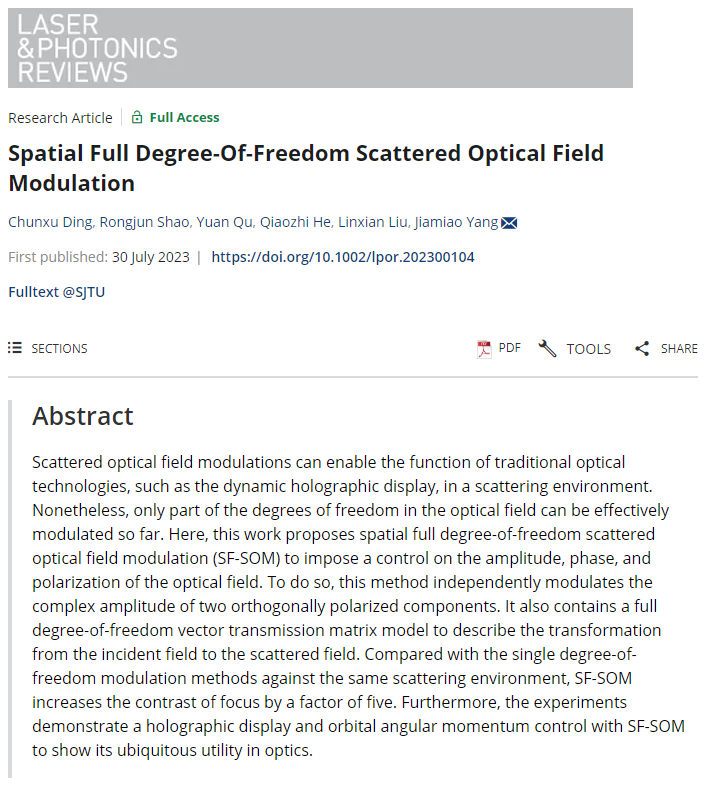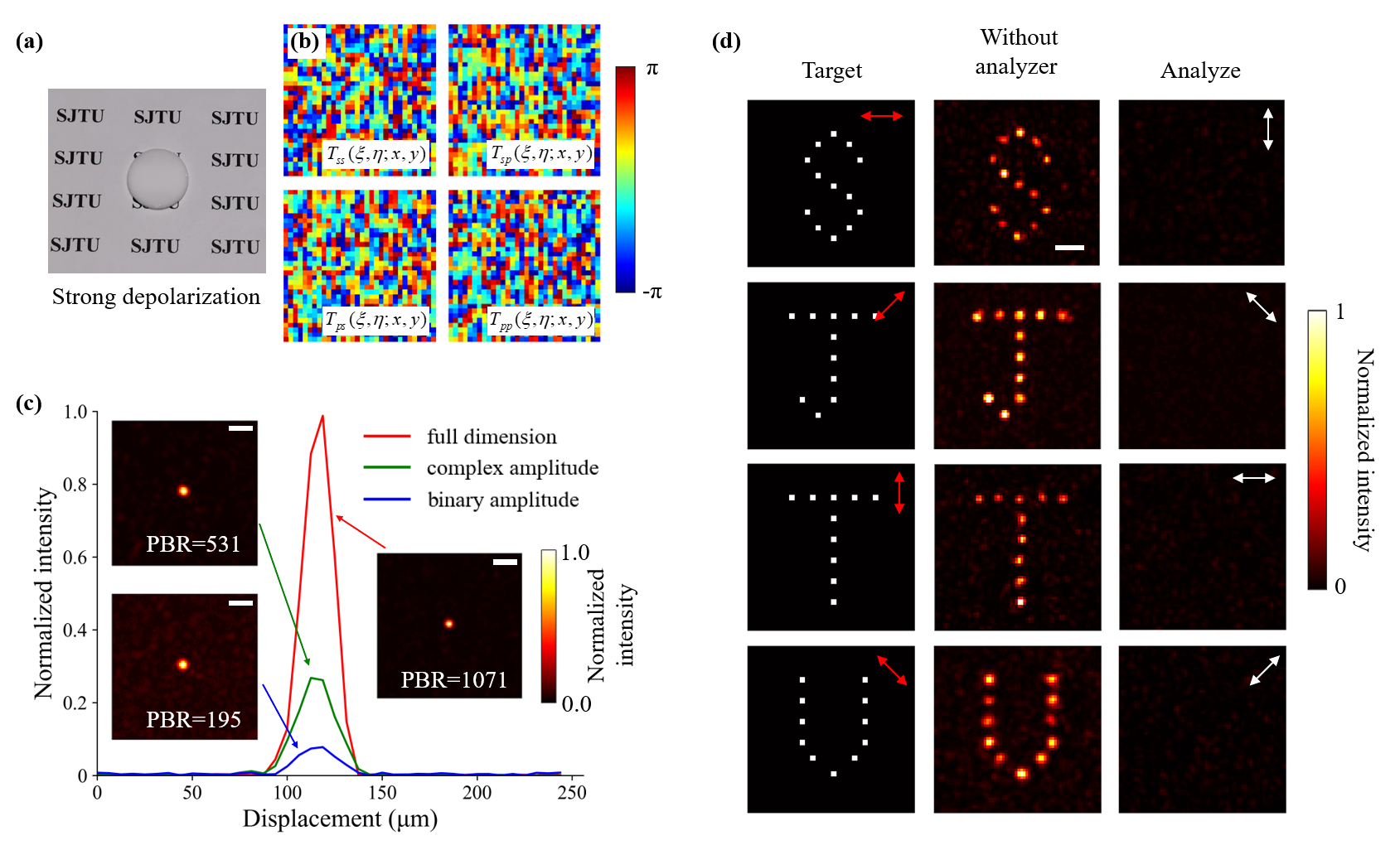- Home
- About Us
- Students
- Academics
-
Faculty
- Electrical Engineering
- Automation
- Computer Science & Engineering
- Electronic Engineering
- Instrument Science and Engineering
- Micro-Nano Electronics
- School of Software
- Academy of Information Technology and Electrical Engineering
- School of Cyber Security
- Electrical and Electronic Experimental Teaching Center
- Center for Advanced Electronic Materials and Devices
- Cooperative Medianet Innovation Center
- Alumni
-
Positions
-
Forum
News
- · Shanghai Jiao Tong University professors Lian Yong and Wang Guoxing's team have made remarkable progress in the field of high-efficiency pulse neural network accelerator chips.
- · AI + Urban Science research by AI Institute was selected as cover story in Nature Computational Science!
- · The first time in Asia! IPADS's Microkernel Operating System Research Wins the Best Paper Award at SOSP 2023
- · Delegation from the Institution of Engineering and Technology Visits the School of Electronic Information and Electrical Engineering for Journal Collaboration
- · Associate professor Liangjun Lu and research fellow Jiangbing Du from Shanghai Jiao Tong University made important advancements on large capacity and low power consumption data transmission
Jiamiao Yang’s team achieved the spatial full degree-of-freedom scattered optical field modulation for the first time
Recently, Jiamiao Yang’s team from the School of Sensing Science and Engineering have made important progress in the optical field modulation under the scattering environment. The research entitled “Spatial full degree-of-freedom scattered optical field modulation” has been published in the journal Laser & Photonics Reviews。

P1 The research published in the journal Laser & Photonics Reviews
1、Background:
Researchers have long been striving to achieve “optical transparency” of media, such as direct observation of diseased cells within biological tissues, and information transmission through fog without causing any damage. Unfortunately, traditional optical techniques face a significant obstacle in the form of the scattering effect in the medium. This effect causes random distortions in the amplitude, phase, and polarization of light, thereby nearly eliminating the possibility of achieving this goal. The invention of scattered optical field modulation has provided hope for resolving this challenge. This innovative approach enables the most effective compensation of scattering distortion. By modulating the incident light and controlling the photon's propagation path within the scattering medium, it holds the potential to transform the medium into the state of "optical transparency". However, the existing methods often fail to provide the desired compensation accuracy. In addition, the modulation performance depends heavily on the scattering properties of the medium, limiting the robustness in various scattering environments. The main reason is that only part of the degrees of freedom in the optical field can be effectively modulated, with the rest information out of control.
2、Research content:
To address this problem, Jiamiao Yang’s team has proposed spatial full degree-of-freedom scattered optical field modulation. In this method, a full degree-of-freedom vector transmission matrix model, instead of the scalar model used in previous studies, was used to describe the transformation from the incident field to the scattered field. In the implementation, two digital micromirror devices were used to modulate, with the super-pixel encoding, the complex amplitude of two orthogonally polarized incident fields. Then the two modulated fields were registered and combined into one field that would propagate through the scattering medium and finally form the target field against scattering. This method cleverly solved the problem of existing spatial light modulators that cannot simultaneously control amplitude, phase, and polarization.

P2 Principle of spatial full degree-of-freedom scattered optical field modulation
This approach greatly improves the accuracy of controlling the scattered optical field, generating high-contrast focus anti-scattering through a medium. The intensity ratio between the focus and the background speckle reaches over 1000. Furthermore, it can also construct holographic letter patterns composed of multiple focal points, each with a unique polarization state. The results have a significant impact on the advancement of biomedical treatment and imaging, as well as holographic display.

P3 Focusing and holographic display against scattering
Benefiting from the active control of the full degree-of-freedom information of the incident light, this method overcomes the reliance on the depolarization properties of the scattering medium, and demonstrates potential for broad applicability across diverse scattering conditions. As shown in the figure below, the experiment realizes simultaneous control of the polarization distribution and the orbital angular momentum of vector vortex beams under different depolarization conditions. The method is expected to become a powerful tool for optical tweezers and free-space optical communication.

P4 Control of the polarization distribution and the orbital angular momentum of vector vortex beams
3、About the paper
Associate Professor Jiamiao Yang from School of Sensing Science and Engineering is the corresponding author of this paper. Ph.D. candidate Chunxu Ding and Research Associate Rongjun Shao are the first authors of this work. This work was supported by the National Natural Science Foundation, and so on.
Jiamiao Yang’s team has been working on optical detection/imaging, optical field modulation, optical computing, as well as the technological development of intelligent optoelectronic instrument design, manufacturing, and integration. This team has published more than 50 high-level academic papers in journals, such as Nat. Commun., Sci. Adv., Light Sci. Appl., and Optica.
Paper Link:
https://doi.org/10.1002/lpor.202300104
Team website:
-
Students
-
Faculty/Staff
-
Alumni
-
Vistors
-
Quick Links
